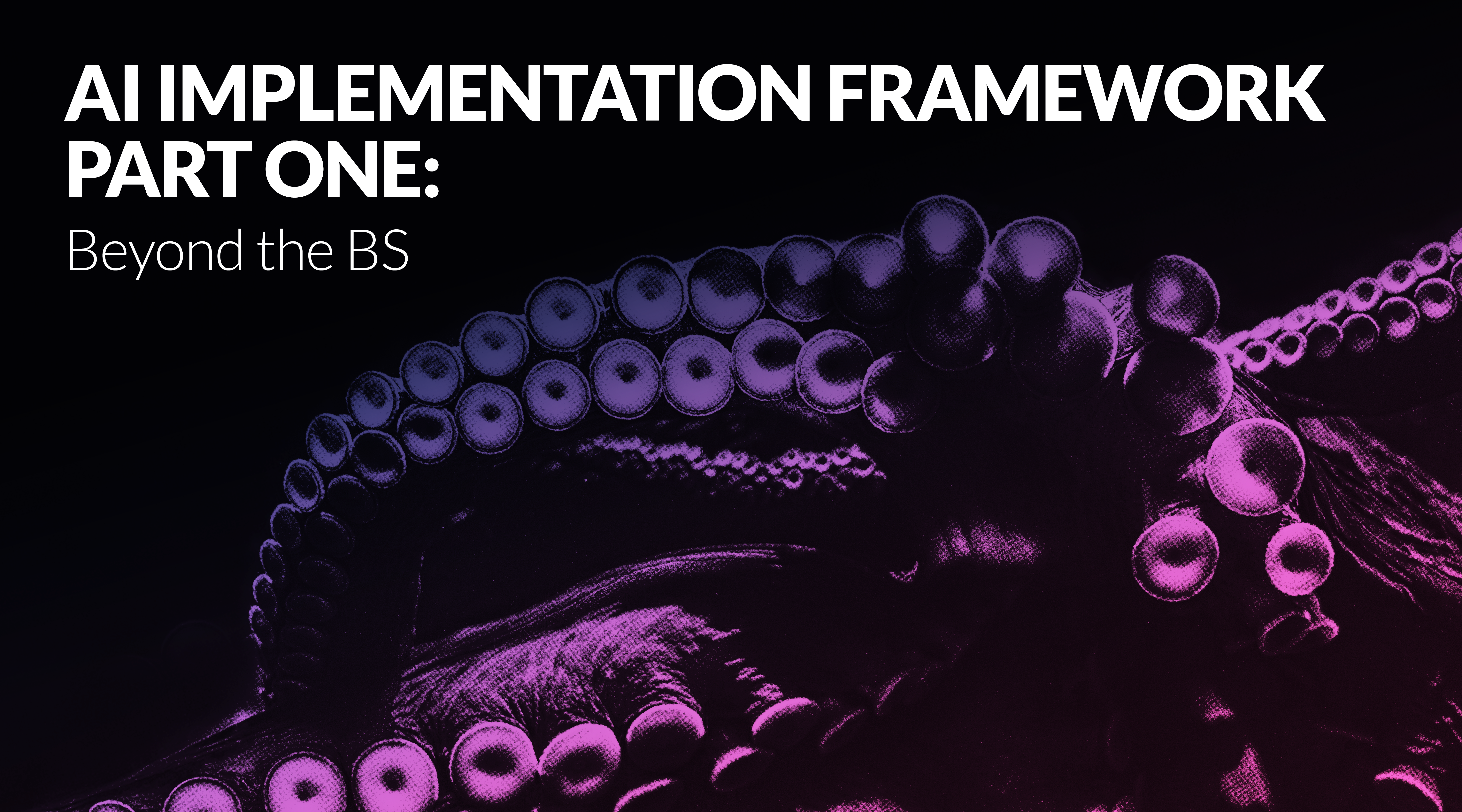Part 1: Beyond the BS: How to Make AI Actually Pay Off(Instead of Setting Fire to Your Money)

Estimated reading time 4 minutes
Let’s cut the crap about AI, shall we? The tech world is having a collective orgasm over artificial intelligence, but here’s the stone-cold truth: most companies are wasting obscene amounts of money on AI initiatives that deliver jack shit in terms of actual business results.
You’ve seen it. The executive who returns from some Silicon Valley junket with stars in their eyes about “revolutionising” the business with AI. The consultants with their slick decks full of buzzwords and promises that conveniently ignore the implementation hellscape awaiting you. The endless pilot projects that never quite make it to production but somehow keep draining your budget like a vampire with an MBA.
It’s time to get real about AI. Not the fairytale version peddled at conferences, but the kind that actually moves business metrics instead of just moving money from your account to some vendor’s.
The Brutal Truth About AI Implementation
- The Opportunity: AI isn’t magical fairy dust you sprinkle on business problems. It’s a powerful tool that, when wielded correctly, can solve specific problems that actually matter to your bottom line. Not “cool” problems. Problems that cost you money, time, or customers.
- The Reality: 87% of AI projects never make it to production. Let that sink in.
Companies are burning cash on digital daydreams while their competitors are figuring out how to use AI for actual competitive advantage.
- The Fix: Forget the AI playbook written by tech bros who’ve never had to deliver quarterly results. We’ve got a different approach – one that puts business value first, moves at speed, and doesn’t require sacrificing your firstborn to the god of data science.
What the Hell is AI Anyway? (The No-Bullshit Version)
AI isn’t Skynet or some digital messiah that’s going to save your business from its own mediocrity. At its core, AI is just math on steroids – algorithms that can:
- Learn patterns from historical data (like what makes your best customers tick)
- Spot anomalies (like potential fraud before it bites you in the ass)
- Make predictions (like forecasting demand without relying on your sales team’s perpetual optimism)
- Automate decisions based on rules (freeing humans from soul-crushing repetitive tasks) That’s it. No consciousness. No robot overlords. Just really smart software that’s particularly good at finding needles in digital haystacks and working tirelessly without complaining about the coffee quality.
Stop with the “Humans vs. Machines” Melodrama
If you’re still regurgitating that worn-out narrative about “AI taking our jobs,” please close this tab and go back to your Blockbuster membership application. The real value comes from creating intelligent partnerships that blend:
- Human creativity, ethical judgment, and strategic thinking
- AI’s relentless computational power, pattern recognition, and tireless execution
Think of it as a spectrum:
- Artisan: 100% human (for tasks requiring emotional intelligence or ethical nuance)
- Assisted: AI provides suggestions, humans make decisions (think spell-check on steroids)
- Augmented: AI does heavy lifting, humans supervise (like predictive maintenance systems)
- Autonomous: AI handles the entire job within defined guardrails (routine data processing, for example)
The goal isn’t to race toward full autonomy everywhere. It’s to strategically determine the right human-AI balance for each specific challenge. Some jobs should stay mostly human. Others can and should be handled by algorithms. Knowing the difference is where the money’s at.
For F***’s Sake, Stop Starting with the Technology
Want to know why most AI initiatives crash and burn like a gender reveal party gone wrong? Because everyone’s doing it backwards.
You don’t start with “Ooh, generative AI is hot right now, how can we use it?” You start with actual business problems worth solving:
- Where are you haemorrhaging money through inefficiency?
- Which critical decisions are currently based on guesswork instead of data?
- What customer pain points are costing you loyalty and revenue?
- Where are your smart people wasting time on dumb, repetitive tasks?
Only after you’ve identified a specific, high-value problem do you consider if and how AI might help solve it. This isn’t just semantics – it’s the difference between setting fire to your AI budget and delivering measurable ROI.
_____________________________________________________________________________________________________________________
In Part 2 of this series, we’ll show you exactly how to structure your AI teams, manage implementation, and deliver actual business value instead of PowerPoint theatre.
We’ll reveal our proven framework for AI that actually pays off—from team composition to measuring what matters. Stay rebellious – we’ll be back with the actionable blueprint next week.
INTERESTED IN FINDING OUT MORE?
Fill in your details below and we’ll be in touch
"*" indicates required fields